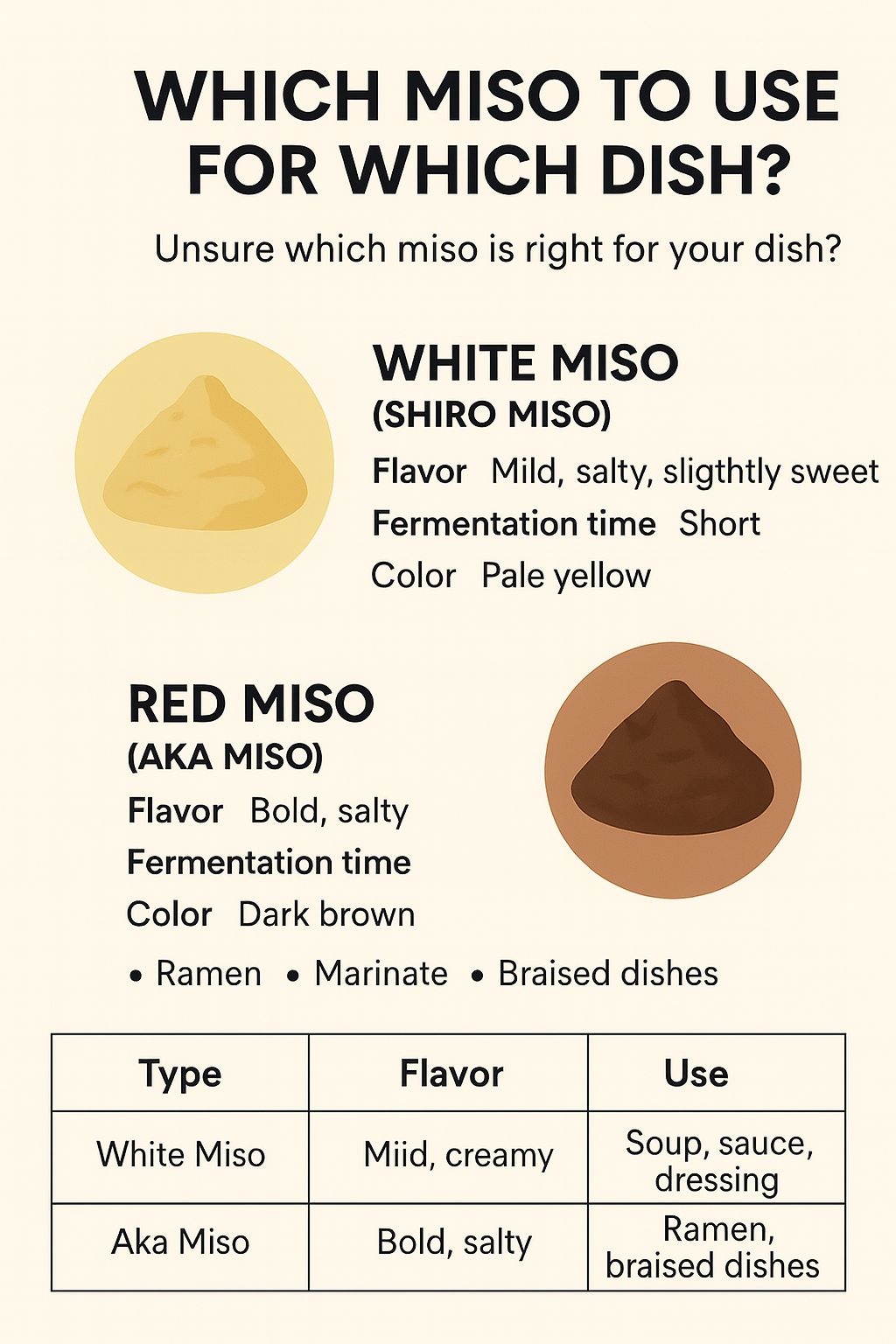Which Miso Suits You Best?
A practical guide to choosing the right miso
Not sure which type of miso fits your way of cooking?
You’re standing in the shop, looking at jars of miso, thinking: white, red… what’s the difference? And when should you use which kind? In this blog, we break it down clearly. We’ll cover the flavor, kitchen uses, and background of the two most commonly used types of miso: white and red.
At the end, you’ll find a simple comparison chart and a link to our in-depth blog covering other miso varieties.
What exactly is miso?
Miso is a fermented paste, usually made from soybeans, rice or barley, water, salt, and a fermentation culture called koji(a type of mold also used in soy sauce and sake). The fermentation process gives miso its well-known savory, umami-rich taste.
Miso is often associated with Japan, but related forms exist in Korea (like doenjang) and China (such as doujiang). Today, miso is increasingly used in modern Western kitchens — from miso butter to miso caramel.
What types of miso are there?
There are dozens of miso varieties, depending on the ingredients, fermentation time, and region. But for home cooks, two main types are most common:
Each has its own flavor profile, use, and intensity.
What is white miso (Shiro Miso)?
White miso is mild in flavor and light in color. Because it ferments for a relatively short time (a few weeks to a few months), the taste is soft, creamy, and slightly sweet.
When to use white miso:
If you’re making lighter dishes, like clear soups or dressings
If you want to add subtle umami to butter, dips, or light sauces
If you're looking for a gentle flavor addition
White miso works surprisingly well in mashed potatoes, over grilled vegetables, or even in a simple salad.
What is red miso (Aka Miso)?
Red miso is fermented for a longer period, resulting in a deeper, saltier, and stronger flavor. The color ranges from reddish brown to nearly black.
When to use red miso:
When cooking hearty dishes like ramen or stews
When marinating meat or robust vegetables
When you want bold, salty umami flavor
Red miso is well suited to rich sauces, miso-glazed eggplant, or combinations with mushrooms and beans.

What can you do with miso?
Miso is more than just soup. You can stir it into:
Marinades for meat or tofu
Sauces (e.g. soy sauce + miso + rice vinegar)
Butter (miso butter is great on corn or bread)
Dressings
Mashed potatoes, hummus, or even cake batter
Use sparingly — miso is salty. Start with a teaspoon and taste as you go.
Frequently Asked Questions About Miso
What’s the difference between white and red miso?
White miso is mild and slightly sweet; red miso is stronger and saltier. They differ in fermentation time, color, and application.
Which miso is best for soup?
White miso is ideal for light miso soups. Red miso is better when you want a fuller, deeper flavor.
Is miso vegetarian or vegan?
The paste itself is plant-based. However, traditional miso soup is often made with dashi (a broth containing fish). Use kombu and shiitake mushrooms for a vegetarian version.
Does miso need to be refrigerated?
Yes. After opening, store miso in an airtight container in the fridge. It keeps well thanks to the salt and fermentation.
Simple comparison chart
We’ve summarized the differences clearly. See the infographic below for an easy side-by-side view.

Want to learn more about other types of miso?
Beyond white and red miso, there are many other varieties — each with their own taste, color, and use. From sweet Saikyo miso to deep, dark Hatcho miso. Curious about these lesser-known types and ready to explore the broader world of miso?
Then read our in-depth blog:




 New Arrivals
New Arrivals
 Outlet
Outlet
 Search by country
Search by country
 Search per category
Search per category
 Holiday Season
Holiday Season
 Recipes
Recipes
 Tjin's Blog
Tjin's Blog









